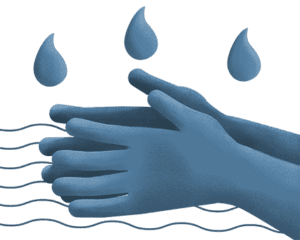Explore the global data below.
Examine the extent to which domestic laws recognize the freshwater rights of Indigenous Peoples, Afro-descendant Peoples, and local communities through distinct “community-based water tenure regimes” (CWTRs). A CWTR is a distinguishable set of domestic national laws and regulations governing situations in which freshwater rights of use and at least either governance or exclusion are held at the community level.
At a minimum, communities’ rights to use and govern freshwater exist in 14 of the 15 countries analyzed, but considerable legislative gaps and administrative burdens commonly hinder their ability to effectively manage and protect their freshwater resources.
The analysis stems from a collaboration between the Environmental Law Institute and the Rights and Resources Initiative and will be expanded and updated over time.
The 15 countries in the dataset are home to more than 1.1 billion rural inhabitants and contain over 25% of the world’s renewable water resources.
RRI’s assessment of community-based freshwater tenure is underpinned by threshold questions at the national and community levels and legal indicators at the community level.
- National-level threshold questions address freshwater rights impacting all individuals within a country, regardless of whether they exercise resource rights through a community-based tenure system.
- Community-level threshold questions address foundational characteristics of each legal framework recognizing community-based freshwater tenure within a country.
- Community-level legal indicators are legal entitlements supporting community-based freshwater tenure under national law, including use, exclusion, transferability, governance, due process and compensation.
The legal recognition of community-based water tenure may or may not be rooted in the broader acknowledgement of communities’ customary rights to water or natural resources, the dependency of communities’ recognized water rights on statutory land rights (termed the “land-water nexus”), or the human right to water. Learn more about RRI’s Water Tenure Methodology.
The analysis stems from the collaborative 2020 report “Who Water?,” written by the Environmental Law Institute and the Rights and Resources Initiative.
The human right to water is legally recognized in 9 of 15 countries: 5 of 6 in Latin America; 3 of 5 in Africa; and only 1 of 4 in Asia,

Communities’ customary water rights are recognized in 32 of the 39 legal frameworks analyzed. 90% of legal frameworks in both Africa and Latin America recognize these rights, compared to 55% in Asia.
How to cite the data:
Source: RRI and ELI. 2020. Whose Water? A Comparative Analysis of National Laws and Regulations Recognizing Indigenous Peoples’, Afro-descendants’, and Local Communities’ Water Tenure.
RRI’s assessment of community-based freshwater tenure is underpinned by threshold questions at the national and community levels and legal indicators at the community level.


National-level threshold questions
Address freshwater rights impacting all individuals within a country, regardless of whether they exercise resource rights through a community-based tenure system. Including:



Community-level threshold questions
Address foundational characteristics of each legal framework recognizing community-based freshwater tenure within a country, including:





Community-level legal indicators
Legal entitlements supporting community-based freshwater tenure under national law, including:
The Land-Water Nexus
The land-water nexus is defined as the dependency of communities’ recognized water rights on statutory land rights. A legislative “land-water nexus” can provide a crucial legal foundation for community-based freshwater rights, particularly when countries’ water laws fail to consider or protect the specific rights and needs of Indigenous Peoples, Afro-descendant Peoples, and local communities.
These questions evaluate elements of legally recognized freshwater rights that impact all people within a given country, and that strongly influence the strength and security of community-based freshwater rights.
These questions evaluate elements of legally recognized freshwater rights that impact all people within a given country, and that strongly influence the strength and security of community-based freshwater rights.
- Global Total
- Regional Comparison
CWTR-level threshold questions provide critical context within which the bundle of freshwater rights held by Indigenous Peoples, Afro-descendants, local communities, and women in those communities should be understood.
- Global
- Regional Comparison
Do CWTR-specific laws recognize community-based rights to use freshwater for cultural/religious, domestic, livelihood, or commercial purposes?
- Global
- Regional Comparison
Do CWTR-specific laws recognize the right of communities to sell, lease, or otherwise transfer any of their rights to freshwater?
- Global
- Regional Comparison
Under CWTR-specific laws, do communities have the right to exclude any third parties from freshwater resources, except under circumstances related to the exercise of the human right to water?
- Global
- Regional Comparison
Do CWTR-specific laws recognize communities’ right to rulemaking, planning and management, internal dispute resolution, or external enforcement?
- Global
- Regional Comparison
Do CWTR-specific laws recognize communities’ domestic due process and compensation should a state or other actor revoke, infringe, or extinguish community freshwater rights?
- Global
- Regional Comparison
Communities’ legal rights to freshwater are dependent on their recognized land or forest rights in 25 of the 39 legal frameworks analyzed and these frameworks establish consistently stronger recognition of community-based freshwater rights.
A legislative “land-water nexus” can provide a crucial legal foundation for community-based freshwater rights, particularly when countries’ water laws fail to consider or protect the specific rights and needs of Indigenous Peoples, Afro-descendant Peoples, and local communities. Findings demonstrate that the “land-water nexus” is often essential to supporting communities’ abilities to claim, protect, and realize their water tenure rights.
How does the land-water nexus affect:
- Customary and Women’s Rights
- Use Rights
- Transferability Rights
- Exclusion Rights
- Governance Rights
- Domestic Due Process





















